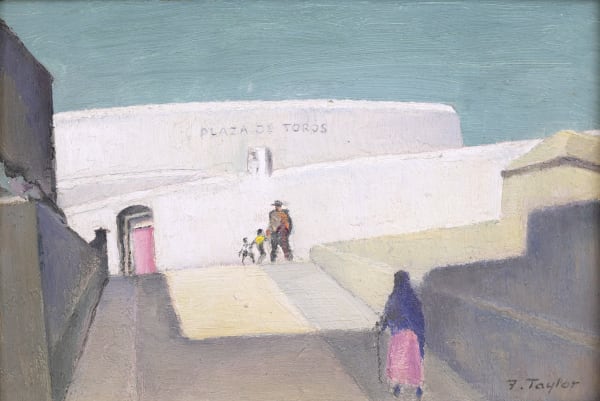Frederick Bourchier Taylor (July 27, 1906- April 21, 1987): Visionary Artist, Architect, and Advocate of Canadian Cultural Heritage
Born in Ottawa, into a family of established bankers, Frederick Bourchier Taylor was a man of many facets—artist, architect, and ardent advocate for the arts. His journey began at McGill University, where he excelled not only in architecture but also in sports, becoming the university's heavyweight boxing champion. This early display of diverse talents foreshadowed a life committed to exploration and excellence in multiple arenas.

Frederic B. Taylor; The Chateau Frontenac from Levis
After graduating in 1930, Taylor practiced architecture briefly before his artistic impulses led him to the London Central School of Arts & Crafts and the Byam Shaw School of Drawing, Painting, and Design. These years in London were transformative, immersing him in a burgeoning art scene and sharpening his skills in printmaking—a medium through which he would later express profound societal observations.

Frederick Bourchier Taylor; Shipyard, Manzanillo Jal., Mexico
During World War II, Taylor championed the Canadian war art movement, pushing for an official government program to document the war effort. Although his proposal was initially overlooked, his persistence paid off when he independently documented the Canadian home front, producing over 200 works that highlighted the industrial and human landscapes of wartime Canada.

Frederick Bourchier Taylor; The St. Joseph Mill Water Wheel
Post-war, Taylor's artistic journey took him to Mexico in 1960, where his creative endeavours expanded into sculpture and silk screening, reflecting his undying curiosity and adaptability. His time in Mexico was marked by a synthesis of cultural influences, as he explored new materials and techniques, enriching his already diverse portfolio.
Taylor's memberships in prestigious institutions like the Royal Canadian Academy of Arts and the Society of Canadian Painters, Etchers and Engravers underscored his significant role in Canada's artistic community. His work not only captured the zeitgeist of his times but also laid foundational stones for future Canadian artists.

Frederick B. Taylor; Strawflowers
Tragically, Taylor's life ended in San Miguel de Allende on April 21, 1987. Despite his untimely death, Frederick B. Taylor's legacy as a visionary artist who deeply influenced Canada's cultural and artistic heritage remains indelible. His artworks, rich with historical and cultural narratives, continue to inspire and educate, ensuring his contributions to the arts are celebrated and studied for generations.



